This article was medically reviewed by Sarah Gehrke, RN, MS. Sarah Gehrke is a Registered Nurse and Licensed Massage Therapist in Texas. Sarah has over 10 years of experience teaching and practicing phlebotomy and intravenous (IV) therapy using physical, psychological, and emotional support. She received her Massage Therapist License from the Amarillo Massage Therapy Institute in 2008 and a M.S. in Nursing from the University of Phoenix in 2013.
There are 11 references cited in this article, which can be found at the bottom of the page.
wikiHow marks an article as reader-approved once it receives enough positive feedback. In this case, 92% of readers who voted found the article helpful, earning it our reader-approved status.
This article has been viewed 1,095,491 times.
Depilatory creams like Nair are a popular method of hair removal, as they are easy to use, can remove hair from awkward spots you can't get with your razor, and the results last longer than shaving. Hair removal creams rely on chemicals to break down your hair, and unfortunately those same chemicals can irritate your skin and cause a rash (dermatitis).[1] Read on to find out what to do if your skin reacts to the hair removal cream and how to prevent future outbreaks.
Steps
Treating the Rash Immediately
-
1Wipe off the cream as soon as you notice a reaction. A little tingling is normal, but if your skin starts to burn, get the cream off your skin immediately. Some companies include a spatula to help scrape off the product; use the spatula or a soft cloth to wipe the cream off your skin.[2]
- Don't scrub your skin or use anything rough or abrasive (like a shower loofah or exfoliating glove) to remove the cream. You don't want to scratch yourself or irritate your skin further.
-
2Run cold water over the area for 10 minutes. You probably want to hop in the shower to do this so you can have a steady stream of water flowing over the rash.[3] Make sure you are rinsing off any cream that may still be on your body, including the residue.[4]
- Do not use soap, body wash or any other product to cleanse the area as you rinse your body.
- Gently pat your skin dry after rinsing.
Advertisement -
3Seek emergency treatment if you feel dizzy, experience severe burning or numbness, or have open or weeping spots around your hair follicle. You may have a chemical burn and need professional treatment.[5]
- If the rash is on your face, around your eyes, or genitals, contact your physician for assistance.[6]
Soothing the Rash
-
1Use moisturizing cream on the rash.[7] A moisturizing lotion may be made up mostly of water and, with repeated use, can actually strip the natural oils from the skin, causing further irritation. Look for a cream or ointment that is not labeled as a solution or lotion and contains natural oils.
- Aloe vera will also soothe and hydrate the skin affected by the rash. You can use an aloe vera gel or use it straight from the plant itself.[8]
- Make sure the product is unscented, as the additional ingredients can irritate your rash.[9]
-
2Apply a hydrocortisone cream to reduce swelling, reduce redness, and itching. Hydrocortisone is a mild corticosteroid and can make you much more comfortable as your rash heals. It should only be used in the short-term unless longer use is prescribed by a doctor.[10]
-
3Take an antihistamine to control itchiness. You can get over-the-counter antihistamines in drowsy or non-drowsy formulas. Your body will have released histamines to protect you from infection, but these may also cause you to itch (they're the same things that cause your nose to run when you have an allergic reaction). The antihistamine will suppress the side-effects of the histamine, leaving you itch-free.[13]
- If the itching is keeping you awake at night, try an antihistamine that makes you sleepy (it probably won't be labeled as such, but it won't have "non-drowsy" on the box).[14]
- Because antihistamines can make you tired (sometimes even the non-drowsy antihistamines can have this side-effect), don't take any before driving or doing anything else that requires you to be very alert.[15]
-
4See a doctor if the rash doesn't disappear after a few days or respond to treatment. If you begin developing other side effects, like hives or a fever, or your current symptoms get worse, contact your doctor immediately.[16]
Avoiding Making the Rash Worse
-
1Don't touch or scratch the affected area. This can damage and further irritate the skin and can lead to an infection. You may even have some depilatory cream still under your nails.
- Wear loose clothes that won't rub or chafe the rash and possibly cause a friction burn.
- When using a cloth to wash the Nair off, don't rub too hard or scrub and try not to wipe the same area too many times.
-
2Use soap with care when you shower. Depending on the type of soap and severity of the rash, you could make the rash worse by using soap when you shower. Pick a mild, fragrance-free cleaner or a gentle non-abrasive soap such as Cetaphil and use as little soap as possible. Do not use deodorant soaps.
- You might also try an oatmeal bath, which can give some relief. You can add ground oatmeal directly to warm bath water or make a sachet.[17]
-
3Don't shave or reapply cream for 72 hours after using a depilatory cream.[18] You should wait 24 hours before applying deodorant, perfumes, makeup, or tanning lotions to the area where you've used the cream. These products can cause you to develop a rash or possibly a chemical burn.
- Wait 24 hours before going swimming or sunbathing.
-
4Use baby wipes instead of toilet paper. Choose unscented baby wipes that contain aloe in place of toilet paper if the rash is on your bikini area.
Expert Q&A
-
QuestionDoes triple antibiotic cream help get rid of this rash?
 Sarah Gehrke, RN, MSSarah Gehrke is a Registered Nurse and Licensed Massage Therapist in Texas. Sarah has over 10 years of experience teaching and practicing phlebotomy and intravenous (IV) therapy using physical, psychological, and emotional support. She received her Massage Therapist License from the Amarillo Massage Therapy Institute in 2008 and a M.S. in Nursing from the University of Phoenix in 2013.
Sarah Gehrke, RN, MSSarah Gehrke is a Registered Nurse and Licensed Massage Therapist in Texas. Sarah has over 10 years of experience teaching and practicing phlebotomy and intravenous (IV) therapy using physical, psychological, and emotional support. She received her Massage Therapist License from the Amarillo Massage Therapy Institute in 2008 and a M.S. in Nursing from the University of Phoenix in 2013.
Registered Nurse Triple antibiotic ointments will help prevent or treat an infection. Often, the rash from Nair is an inflammatory response or an allergic reaction and not an infection. You cannot treat the itching, swelling, and redness with the triple antibiotic ointment. An over-the-counter hydrocortisone cream or antihistamine cream are better options if an infection is not suspected. If needed, visit your dermatologist or doctor to determine what the best treatment is.
Triple antibiotic ointments will help prevent or treat an infection. Often, the rash from Nair is an inflammatory response or an allergic reaction and not an infection. You cannot treat the itching, swelling, and redness with the triple antibiotic ointment. An over-the-counter hydrocortisone cream or antihistamine cream are better options if an infection is not suspected. If needed, visit your dermatologist or doctor to determine what the best treatment is. -
QuestionWhat if I don't have any creams?
 Sarah Gehrke, RN, MSSarah Gehrke is a Registered Nurse and Licensed Massage Therapist in Texas. Sarah has over 10 years of experience teaching and practicing phlebotomy and intravenous (IV) therapy using physical, psychological, and emotional support. She received her Massage Therapist License from the Amarillo Massage Therapy Institute in 2008 and a M.S. in Nursing from the University of Phoenix in 2013.
Sarah Gehrke, RN, MSSarah Gehrke is a Registered Nurse and Licensed Massage Therapist in Texas. Sarah has over 10 years of experience teaching and practicing phlebotomy and intravenous (IV) therapy using physical, psychological, and emotional support. She received her Massage Therapist License from the Amarillo Massage Therapy Institute in 2008 and a M.S. in Nursing from the University of Phoenix in 2013.
Registered Nurse Keep the itchy area cool and moist. Put cloths soaked in ice water on the rash a few times a day. Too much wetting and drying will dry the skin, which can increase itching. Keep cool, and stay out of the sun. Heat makes itching worse. You might also add a handful of oatmeal (ground to a powder) to your bath. Or you can try an oatmeal bath product such as Aveeno. Avoid scratching as much as possible. Scratching leads to more scratching. Cut nails short or wear cotton gloves at night to prevent scratching. Wear cotton clothing. Do not wear wool and synthetic fabrics next to your skin. Use gentle soaps such as Basis, Cetaphil, Dove, or Oil of Olay and use as little soap as possible. Do not use deodorant soaps. Wash your clothes with a mild soap such as CheerFree or Ecover rather than a detergent. Rinse twice to remove all traces of the soap. Do not use strong detergents.
Keep the itchy area cool and moist. Put cloths soaked in ice water on the rash a few times a day. Too much wetting and drying will dry the skin, which can increase itching. Keep cool, and stay out of the sun. Heat makes itching worse. You might also add a handful of oatmeal (ground to a powder) to your bath. Or you can try an oatmeal bath product such as Aveeno. Avoid scratching as much as possible. Scratching leads to more scratching. Cut nails short or wear cotton gloves at night to prevent scratching. Wear cotton clothing. Do not wear wool and synthetic fabrics next to your skin. Use gentle soaps such as Basis, Cetaphil, Dove, or Oil of Olay and use as little soap as possible. Do not use deodorant soaps. Wash your clothes with a mild soap such as CheerFree or Ecover rather than a detergent. Rinse twice to remove all traces of the soap. Do not use strong detergents.
References
- ↑ https://medlineplus.gov/rashes.html
- ↑ http://www.mayoclinic.org/first-aid/first-aid-chemical-burns/basics/art-20056667
- ↑ http://www.mayoclinic.org/first-aid/first-aid-chemical-burns/basics/art-20056667
- ↑ http://www.mayoclinic.org/first-aid/first-aid-chemical-burns/basics/art-20056667
- ↑ http://www.mayoclinic.org/first-aid/first-aid-chemical-burns/basics/art-20056667
- ↑ http://www.mayoclinic.org/first-aid/first-aid-chemical-burns/basics/art-20056667
- ↑ https://www.aad.org/dermatology-a-to-z/diseases-and-treatments/a---d/contact-dermatitis/diagnosis-treatment-and-outcome
- ↑ http://www.webmd.com/pain-management/guide/pain-caused-by-burns
- ↑ http://health.howstuffworks.com/skin-care/beauty/hair-removal/5-facts-to-know-about-hair-removal-creams1.htm
- ↑ http://www.mayoclinic.org/steroids/art-20045692?pg=2
- ↑ http://www.mayoclinic.org/steroids/art-20045692?pg=2
- ↑ http://www.mayoclinic.org/diseases-conditions/itchy-skin/basics/treatment/con-20028460
- ↑ http://www.mayoclinic.org/diseases-conditions/allergies/in-depth/allergy-medications/art-20047403
- ↑ http://www.mayoclinic.org/diseases-conditions/itchy-skin/basics/treatment/con-20028460
- ↑ http://www.mayoclinic.org/diseases-conditions/allergies/in-depth/allergy-medications/art-20047403
- ↑ http://www.mayoclinic.org/diseases-conditions/burns/basics/symptoms/con-20035028
- ↑ http://www.webmd.com/skin-problems-and-treatments/tc/rash-age-12-and-older-home-treatment#1
- ↑ http://www.nair.com.au/faq/
About This Article
To get rid of a Nair rash, wipe off the cream as soon as you feel a itchiness or a burning sensation. Once you’ve removed the cream, run cold water over the area for 10 minutes or take a cold shower to remove any remaining Nair. To soothe your skin, apply a gentle, moisturizing lotion or aloe vera. If your skin is itchy, try applying a hydrocortisone cream to the area. Make sure to see a doctor if your rash doesn’t improve or if you have severe symptoms. To learn how to make an oatmeal bath to soothe your rash, read more from our Medical co-author.
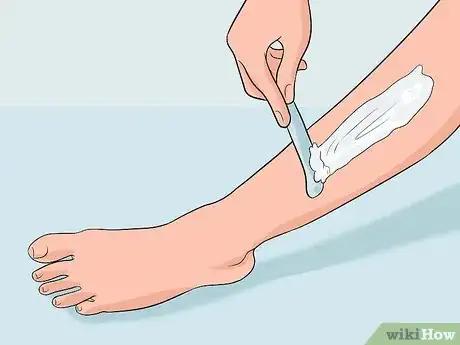

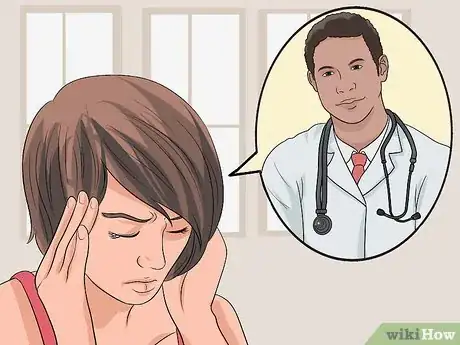

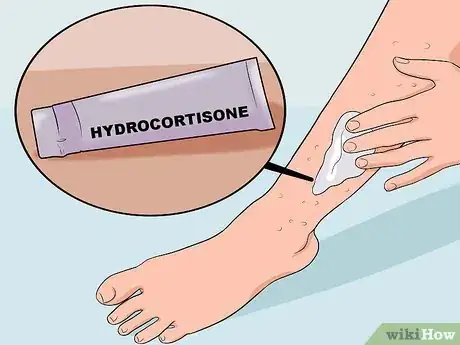
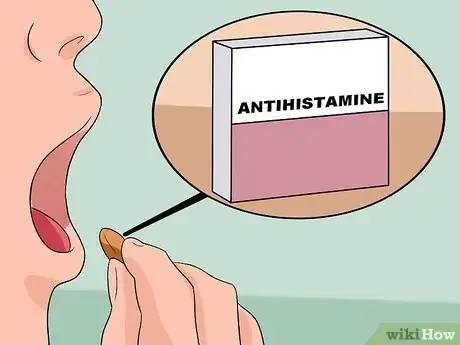
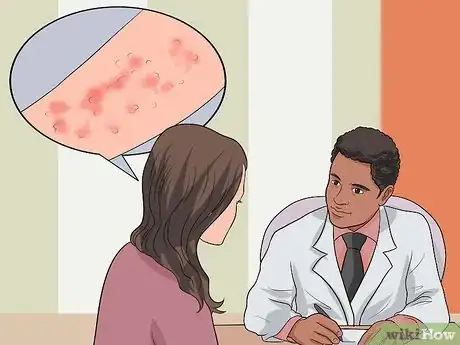

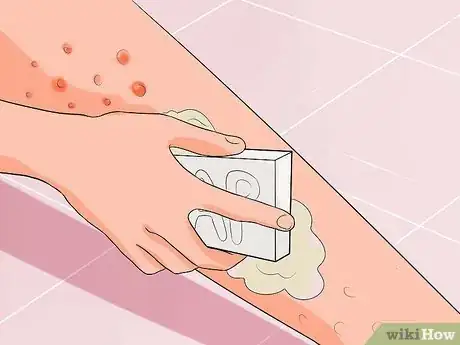
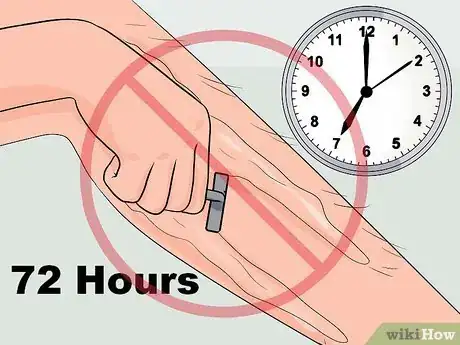

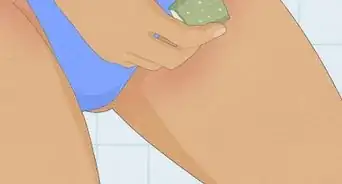
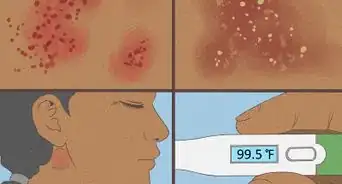
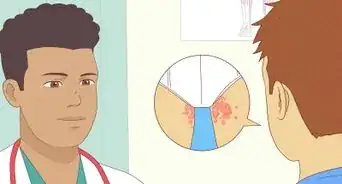
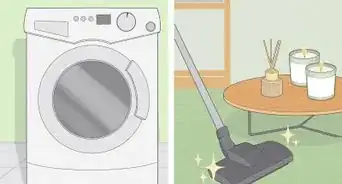

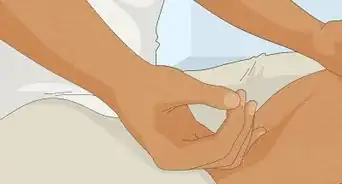
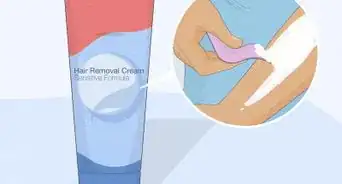

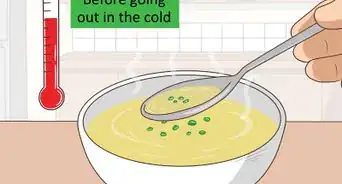
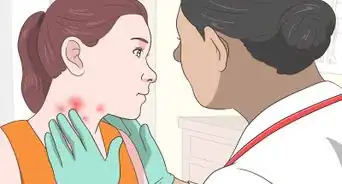

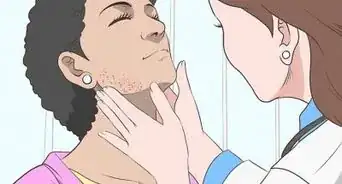










-Step-36.webp)






































Medical Disclaimer
The content of this article is not intended to be a substitute for professional medical advice, examination, diagnosis, or treatment. You should always contact your doctor or other qualified healthcare professional before starting, changing, or stopping any kind of health treatment.
Read More...